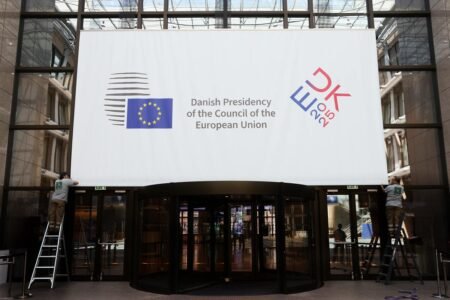Forex trading involves the simultaneous buying and selling of currency pairs. That is why currencies are always in pairs. Currencies from all over the world are paired together. These pairs are grouped into three distinct categories depending on the volume traded. These categories are major currency pairs, minor currency pairs, and exotic currency pairs.
Major Forex Pairs
These are the most traded currency pairs in the forex market. They are the most popular currency pairs among forex traders. The major currencies are typically from the G10 countries and are among the leading reserve currencies globally and also dominate international trade. The value of these currencies is believed to remain stable in the long run with little or no risk of devaluation by the respective central banks.
Commodity currencies are also considered as part of the major forex pairs. These are currencies whose value largely depend on the export of commodities. It means their performance is directly correlated to the value of the commodities in the international market like Platinum trading. Such currencies include the Australian, Canadian and the New Zealand dollar.
The major currency pairs in the forex market are derived from these currencies:
- The U.S. Dollar (USD)
- European Union Euro (EUR)
- U.K. Pound Sterling (GBP)
- Japanese Yen (JPY)
- Swiss Franc (CHF)
- Canadian Dollar (CAD)
- Australian Dollar (AUD)
- New Zealand Dollar (NZD)
These currencies are paired with the USD to form major forex pair. They are EUR/USD, GBP/USD, AUD/USD/ USD/CAD, USD/CHF, USD/JPY, and NZD/USD.
In terms of volume traded, the USD account for up to 86% of the daily forex turnover and its value fluctuations corresponds to those of the US30 or the US500. Among the major currency pairs, the EUR/USD pair is the most traded, representing about 20% of the daily turnover. The popularity of the major currency pairs among forex traders can be attributed to the high liquidity and lower spreads. The high liquidity makes entry and exit of trades easier, mostly when large positions are traded with little or no slippage.
Minor Forex Pairs
Minor currency pairs are also known as crosses. These are currency pairs involving the major currencies but paired amongst themselves. Crosses involving the EUR, GBP and the JPY are among the most popular among minor forex pairs. More so, currencies from Scandinavian countries are also included among the minor currencies. They are Danish Kroner (DKK), Norwegian Kroner (NOK), and Swedish Krona (SEK).
Some of the minor forex pairs include EUR/GBP, EUR/CAD, GBP/CAD, EUR/JPY, AUD/JPY, GBP/JPY, EUR/CHF, and the CAD/CHF. The Euro, which is the second most used reserve currency in the world, accounts for about 37% of daily forex volumes. Furthermore, it is the base currency in every forex pair that is paired with it, i.e., it is the first currency in the currency pair.
The JYP accounts for the second-largest trading volume with 17%, the GBP 15%, the CHF 7%, the AUD 6.5%, and the CAD 4.2%.
Unlike the major forex pairs which tend to have higher liquidity throughout the trading day, the minor forex pairs experience alternating periods of low and high liquidity depending on the forex trading time. The reason behind increased volatility during the different forex trading sessions is because the domestic banks are open and large businesses can conduct international trade. Since most transactions are done in the local currency, it increases its liquidity. Conversely, the liquidity of the forex crosses reduces when the local banks close.
In Australia, the Sydney forex trading time begins at 9.00 PM GMT and ends at 6.00 AM GMT. During this period, minor forex pairs with the AUD and NZD experience higher liquidity as compared to when the Sydney forex trading session ends. Forex crosses with the highest liquidity during this session are the AUD/JPY, EUR/JPY, and GBP/JPY pairs.
The Tokyo forex market hours start at 11.00 PM GMT to 8.00 AM GMT. The JPY crosses have considerably higher liquidity during this session.
In Europe, the forex market sessions start at 8.00 AM GMT and end at 5.00 PM GMT. Currency crosses paired with the EUR, and the GBP have the highest liquidity during this period. The EUR/GBP pair is the most traded forex cross during this session. For traders interested in trading the EUR and GBP currency crosses, the London forex trading hours are the best since about 42% of daily forex turnover occurs during this session.
The North American forex trading hours start at noon GMT and end at 10.00 PM GMT. Currency crosses with the CAD have higher liquidity during this session.
Compared to the major forex pairs, the minor forex pairs have lower liquidity and higher spreads. The volatility and spreads are, however, lower during the overlaps of these trading sessions. They are:
- The Australian-Asian forex market hours overlap between 11.00 P GMT to 5.00 AM GMT. Crosses between the AUD, NZD and the JPY have higher liquidity in this period.
- The Asian-European forex market hours overlap between 6.00 AM GMT and 7.00 AM. The EUR/JPY and GBP/JPY have increased liquidity during this period.
- The European-North American forex market hours overlap from noon GMT to 3.00 PM. Crosses between the EUR, GBP and the CAD have higher liquidity in this session. This session can be a good time for SDS trading.
Exotic Forex Pairs
Exotic currencies are currencies from developing and emerging countries. The demand for these currencies in the global market is low compared to major currencies which belong to countries that dominate international trade.
In forex trading, exotic currencies are often paired with major currencies to form the exotic forex pairs. Examples of exotic currencies include Singapore dollar (SGD), Turkish Lira (TRY), Mexican Peso (MXN), Indian Rupee (INR), Russian Ruble (RUB)South African Rand (ZAR), and South Korean won (KRW). An example of an exotic forex pair is AUD/SGD.
The main features of the exotic forex pairs are that they are illiquid, traded in very low volumes, and can be accompanied by instances of extreme volatility. The extreme volatility can be a result of the low traded volumes, which results in significant price distortions when large positions are traded. Furthermore, the spreads on exotic currency pairs are highest in the forex market, which makes trading them very expensive.







